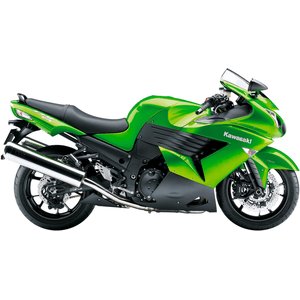Kawasaki ZZR 1400 (2008-2011): A Timeless Hyperbike Experience
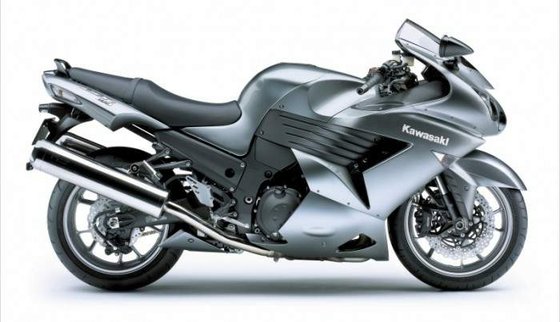
When Kawasaki unleashed the ZZR 1400 (known as the Ninja ZX-14 in North America) in 2006, it rewrote the rules of the hyperbike segment. The 2008–2011 iteration refined this legend, blending apocalyptic power with unexpected civility. Even by today’s standards, this machine remains a masterclass in balancing brute force and rider comfort. Let’s dissect why this generation remains a benchmark.
Design & Aerodynamics: Form Follows Fury
The ZZR 1400’s silhouette is a study in functional aggression. Its wind-tunnel-honed bodywork stretches 2,170 mm (85.4 inches) long, with a flowing fairing that hides a monocoque aluminum frame. Unlike conventional designs, the frame arches over the engine, eliminating protruding spars and creating a seamless aesthetic. The quadruple projector headlights—a signature Kawasaki touch—give it a predatory gaze, while integrated LED turn signals maintain clean lines.
At 760 mm (29.9 inches) wide and 1,170 mm (46.1 inches) tall, it’s surprisingly compact for a bike packing a 1,352cc engine. The central ram-air intake isn’t just for show; it forces cold air into the throttle bodies with ruthless efficiency, contributing to its 197 PS (194 HP) output under RAM air conditions.
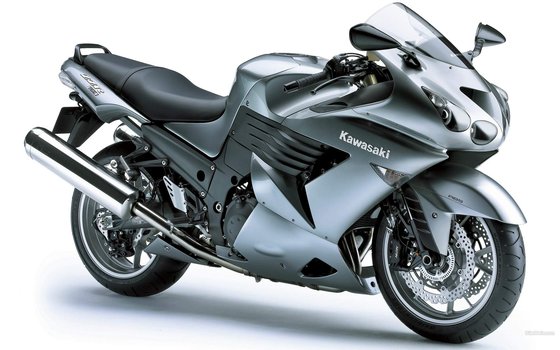
Engine & Performance: The Soul of a Titan
Power Delivery
The liquid-cooled, DOHC inline-four engine is the star here. With a bore x stroke of 84 x 61 mm (3.3 x 2.4 inches), it’s oversquare for high-revving performance. Yet, it’s the torque curve that astonishes: 154 Nm (113.6 lb-ft) at 7,500 RPM, accessible from as low as 3,000 RPM. Twist the throttle in any gear, and the ZZR surges forward with locomotive urgency.
Refinement
Kawasaki’s dual balancer shafts neutralize vibrations, making the ZZR feel more like a turbine than a piston engine. Even at its 9,500 RPM redline, the cockpit remains eerily calm. The 6-speed transmission slots gears with rifle-bolt precision, while the hydraulic clutch (with a radial-pump master cylinder) offers buttery engagement.
Performance Metrics
- 0–100 km/h (0–62 mph): 2.9 seconds
- Top Speed: Electronically limited to 300 km/h (186 mph)
- Standing ¼ Mile: 10.3 seconds @ 230 km/h (143 mph)
These figures still embarrass modern liter bikes. The secret? A combination of Mitsubishi’s digital fuel injection (DFI) and meticulous intake/exhaust tuning. The 44mm Mikuni throttle bodies spray fuel at a 20-degree angle for optimal combustion, while triple honeycomb catalyzers keep emissions compliant without strangling power.
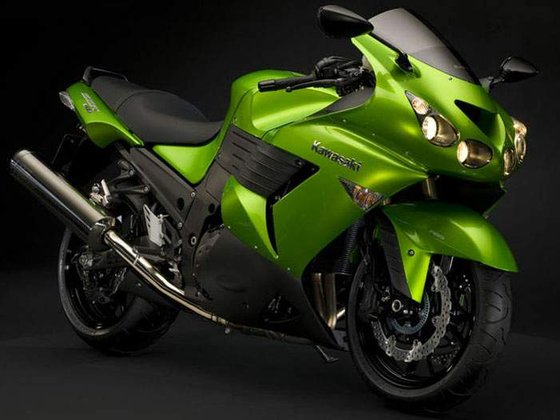
Handling & Ride Experience: Controlled Chaos
Chassis Dynamics
The aluminum monocoque frame weighs just 220 kg (485 lbs) dry, yet its rigidity rivals aerospace alloys. Paired with a 23-degree rake and 94 mm (3.7 inches) of trail, the ZZR carves corners with sportbike agility. The wheelbase stretches to 1,460 mm (57.5 inches), ensuring stability at speeds where most bikes feel twitchy.
Suspension & Brakes
- Front: 43mm inverted forks with 13-way compression/11-way rebound damping adjustability
- Rear: Bottom-Link Uni-Trak shock with fully adjustable preload and damping
- Brakes: Dual 310mm petal discs with radial-mount 4-piston calipers (front), 250mm disc with 2-piston caliper (rear)
The setup prioritizes feedback over outright stiffness. Over broken pavement, the suspension absorbs impacts without wallowing. The radial brakes offer surgical stopping power—essential when you’re shedding triple-digit speeds.
Tire Setup
- Front: 120/70 ZR17
- Rear: 190/50 ZR17
The Bridgestone Battlax Hypersport S22 (modern equivalent) provides tenacious grip, though riders today might upgrade to Michelin Power GP rubber for sharper turn-in.
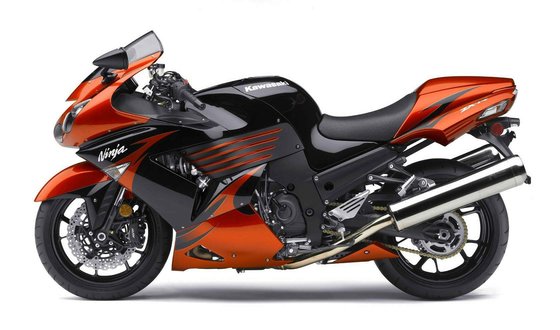
Comfort & Ergonomics: The Gentle Giant
For a hyperbike, the ZZR 1400 is shockingly livable. The saddle sits at 800 mm (31.5 inches), allowing even shorter riders to flat-foot at stops. The bars are 30 mm closer to the rider than the Hayabusa’s, creating a relaxed, upright posture. Kawasaki’s "Bottom-Link" rear suspension isolates the seat from chassis shocks, making 300-km days feasible.
The 22L (5.8-gallon) fuel tank offers a 250-km (155-mile) range, while the LCD dash (with gear indicator and programmable shift lights) keeps you informed without distraction.
Competition: How the ZZR 1400 Stacks Up
Suzuki Hayabusa (2008-2011)
- Power: 194 HP (RAM air) vs. ZZR’s 197 HP
- Weight: 260 kg (573 lbs) vs. ZZR’s 257 kg (566 lbs)
- Ergonomics: Hayabusa’s cockpit is more stretched, favoring top-speed stability over agility.
Verdict: The ZZR feels nimbler in corners and offers a stronger mid-range punch, while the ‘Busa excels in high-speed aerodynamics.
Honda CBR1100XX Super Blackbird
- Power: 152 HP vs. ZZR’s 197 HP
- Weight: 223 kg (492 lbs)
- Tech: Lacks adjustable suspension and radial brakes.
Verdict: The Blackbird is lighter and more analog but feels dated next to the ZZR’s tech and firepower.
BMW K1300S
- Power: 175 HP
- Weight: 254 kg (560 lbs)
- Features: Electronic suspension, heated grips.
Verdict: The BMW prioritizes touring comfort, but the ZZR dominates in acceleration and raw excitement.
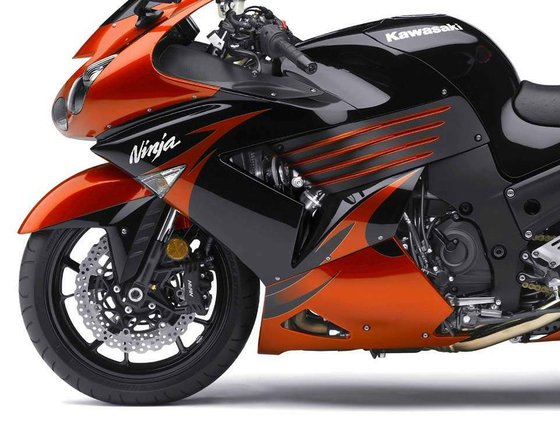
Maintenance: Keeping the Beast Alive
Key Service Points
- Valve Clearance Check: Every 24,000 km (15,000 miles). Specs:
- Intake: 0.15–0.20 mm (0.006–0.008 in)
- Exhaust: 0.22–0.27 mm (0.009–0.011 in)
- Chain Maintenance: Clean/lube every 500 km (310 miles). Upgrade to a DID 520ZVX3 chain for longevity.
- Oil Changes: 4.1L (4.3 quarts) of 10W-40 synthetic every 6,000 km (3,700 miles).
- Coolant: 3.4L (3.6 quarts). Replace every 2 years.
Common Upgrades
- Exhaust: Swap the stock mufflers for an Akrapovič slip-on. Saves 6.5 kg (14.3 lbs) and unlocks 5 HP.
- Suspension: Öhlins STX46 rear shock improves damping control for aggressive riding.
- Brakes: EBC HH sintered pads reduce fade during track days.
MOTOPARTS.store Recommendations
- Performance Air Filter: K&N KA-1404 for better airflow.
- Adjustable Levers: Pazzo Racing levers for personalized ergonomics.
- Tire Pressure Monitors: FOBO 2 Bluetooth sensors for real-time data.
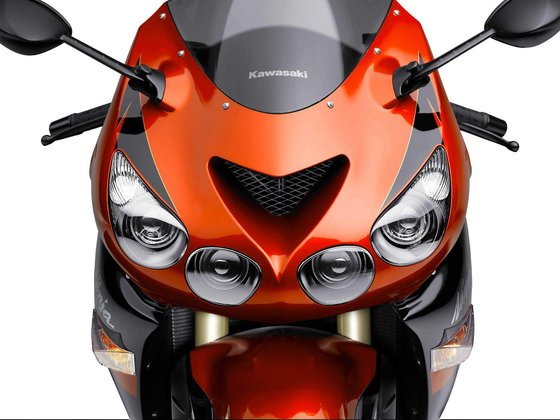
Conclusion: The Hyperbike That Does It All
The 2008–2011 Kawasaki ZZR 1400 isn’t just a straight-line missile—it’s a testament to engineering duality. It cossets you on commutes, devours autobahns, and humiliates sportbikes on canyon roads. While newer models boast traction control and ride modes, the ZZR relies on analog purity and a chassis that communicates like a telepath. For riders seeking a used hyperbike that’s both manageable and monstrous, this Kawasaki remains peerless.
Whether you’re hunting for OEM replacements or performance upgrades, MOTOPARTS.store has the expertise and inventory to keep your ZZR 1400 dominating the road. From chain kits to race-spec brake rotors, we’re here to fuel your two-wheeled addiction.
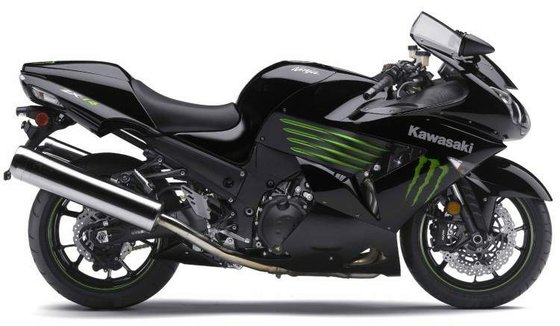
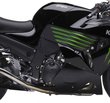
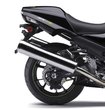








Specifications sheet
| Engine | |
|---|---|
| Stroke: | Four-stroke |
| Max power: | 147 kW | 197.0 hp |
| Max torque: | 154 Nm |
| Fuel system: | DFI® with four 44mm Mikuni throttle bodies |
| Max power @: | 9500 rpm |
| Displacement: | 1352 ccm |
| Max torque @: | 7500 rpm |
| Bore x stroke: | 84.0 x 61.0 mm (3.3 x 2.4 in) |
| Configuration: | Inline |
| Cooling system: | Liquid |
| Compression ratio: | 12.0:1 |
| Number of cylinders: | 4 |
| Valves per cylinder: | 4 |
| Dimensions | |
|---|---|
| Wheelbase: | 1461 mm (57.5 in) |
| Dry weight: | 220 |
| Wet weight: | 257 |
| Seat height: | 800 mm (31.5 in) |
| Overall width: | 760 mm (29.9 in) |
| Overall height: | 1170 mm (46.1 in) |
| Overall length: | 2170 mm (85.4 in) |
| Ground clearance: | 125 mm (4.9 in) |
| Fuel tank capacity: | 22 L (5.8 US gal) |
| Drivetrain | |
|---|---|
| Final drive: | chain |
| Gear ratios: | ['1st: 2.611', '2nd: 1.947', '3rd: 1.545', '4th: 1.333', '5th: 1.154', '6th: 1.036'] |
| Chain length: | 116 |
| Transmission: | 6-speed, hydraulic wet clutch |
| Rear sprocket: | 41 |
| Front sprocket: | 17 |
| Maintenance | |
|---|---|
| Engine oil: | 10W40 |
| Brake fluid: | DOT 4 |
| Spark plugs: | NGK CR9EIA-9 |
| Spark plug gap: | 0.9 |
| Coolant capacity: | 3.4 |
| Forks oil capacity: | 0.96 |
| Engine oil capacity: | 4.1 |
| Engine oil change interval: | Every 5000 km or 2 years |
| Valve clearance (intake, cold): | 0.15–0.20 mm |
| Valve clearance check interval: | 24,000 km / 15,000 mi |
| Valve clearance (exhaust, cold): | 0.22–0.27 mm |
| Recommended tire pressure (rear): | 2.9 bar (42 psi) |
| Recommended tire pressure (front): | 2.9 bar (42 psi) |
| Additional Features | |
|---|---|
| Ignition: | TCBI with Digital Advance |
| Instrumentation: | Analog tachometer/speedometer, LCD display with gear position, fuel gauge, and trip meters |
| Special editions: | Monster Energy graphics, Akrapovic exhaust options (2010 Sports Edition) |
| Chassis and Suspension | |
|---|---|
| Rake: | 23° |
| Frame: | Aluminum monocoque |
| Trail: | 94 mm (3.7 in) |
| Rear tire: | 190/50 z-17 |
| Front tire: | 120/70 z-17 |
| Rear brakes: | Single 250mm petal disc, 2-piston caliper (ABS on some models) |
| Front brakes: | Dual 310mm petal discs, radial-mount 4-piston calipers (ABS on some models) |
| Rear suspension: | Bottom-Link Uni-Trak® with gas-charged shock, adjustable preload, compression, and rebound damping |
| Front suspension: | 43mm inverted cartridge fork, adjustable preload, compression, and rebound damping |
| Rear wheel travel: | 121.9 mm (4.8 in) |
| Front wheel travel: | 116.8 mm (4.6 in) |



